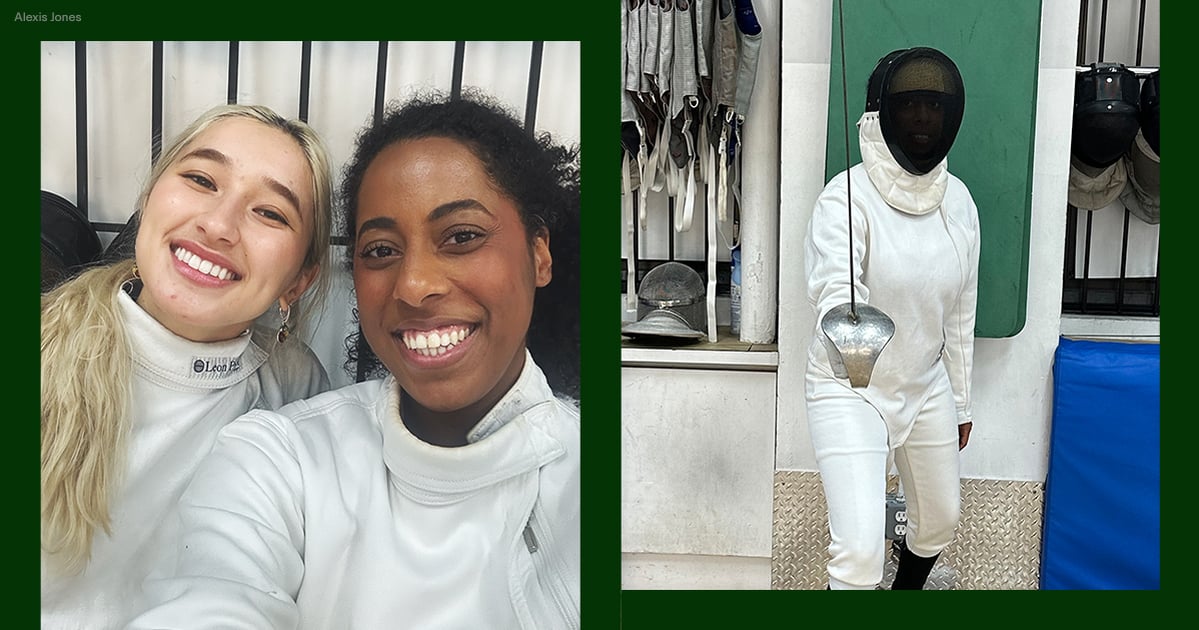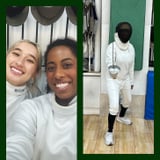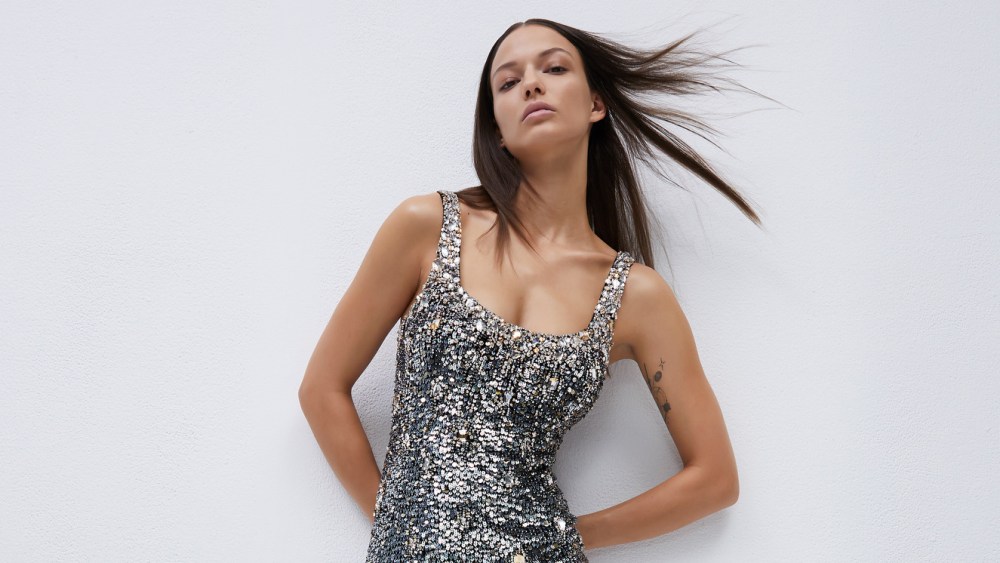Like many cusp Gen Z millennials, my first introduction to fencing was through the 1998 film “The Parent Trap.” If you haven’t seen the movie in a while, there’s an iconic scene where twins Hallie and Annie (both played by Lindsay Lohan), who’d been split up as babies and 11 years later wind up at the same summer camp, reunite during a fencing match. The scene involves some serious footwork and tricks (a la stunt doubles), trash talk, and of course a big reveal when the masks come off, putting the twins face to face. Fencing with Team USA’s Maia Chamberlain was nothing like that, of course. But, somehow, it was even better.
I arrived at the Manhattan Fencing Center, where Chamberlain regularly trains, on a late Thursday afternoon in June. I was told to dress comfortably, so I went with a classic pair of Hokas, leggings, and a tank. Upon arrival, I checked in with the receptionist, who promptly handed me a water. “You’re going to need this when you’re done,” she said with a playful smirk.
At that moment, I knew that I was potentially in over my head, and started questioning whether my naturally uncoordinated body would actually hold up during the lesson. Too late to back out, I took a sip of the water and waited for Chamberlain to arrive. Fortunately, she quelled some of my fears from the start, assuring me we’d be starting with the basics. But then she reminded me we’d be focusing on Saber, one of three fencing disciplines (Epee and Foil are the others), and the fear began to creep up again.
Each fencing discipline has its own distinct weapon and set of rules. “With Saber . . . you can make slashing movements,” she told me during our locker room chat. “And I like that a lot because it’s very similar to what you see in media when you have sword fighting. It’s a lot more fast-paced and there’s really grand movements.” As she was talking I couldn’t help but think, “I’m going to slash an Olympian?” Then, an even more intimidating thought came to mind: an Olympian was going to slash me.
Despite that realization, as the two of us got dressed I started to feel more at ease, layering on the protective gear, which included breeches, jacket, and gloves. Then, without hesitation, I followed her onto the piste or strip, also known as the playing area. It was time to get started.
What It’s Like to Fence an Olympian
The lesson began with positioning, both my body and the sword. Then we got into hits and target areas – with Saber, that includes the body from the waist up, including arms, and head. We also covered several drills, practicing my advances and parries (blocks).
I quickly learned that fencing requires a lot of mental stamina. You’re constantly thinking about moves and counter moves, trying to anticipate what your opponent will do next. “I’m sure people have told you, but it’s very much physical chess,” Chamberlain told me at the Team USA Fencing media day, just a few weeks ahead of our lesson. But I didn’t have a full appreciation for it until I was across from her myself with a saber in hand.
The mental agility is what attracted Chamberlain to the sport in the first place. Each opponent is “like a different puzzle to solve,” she told PS in May. Turns out, I’m not a natural fencer, but I really enjoyed the challenge. Each time we reset, Chamberlain would encourage me to attack harder, or “try a belly cut this time.”
It’s better to be “strong and wrong” or imperfect in an attack than it is to give a scared or half-baked attempt, Chamberlain told me, encouraging me to let go of the fear that was visibly inhibiting my cuts. It’s a lesson she learned from her coach and one that she says has carried into her personal life.
As the the two of us walked back to the locker room, I felt pretty good about myself. While I wouldn’t be an Olympic fencer anytime soon, there’s was something extremely rewarding about having pushed my brain and body to new extremes.
It also brought about an unexpected sense of freedom. In my day to day life, I often find myself policing my emotions and reactions out of fear of reinforcing stereotypes or being misunderstood. But fencing offers up the right to attack with a confidence and aggression that is often not afforded to women who look like me.
Ultimately, I walked away extremely grateful for the opportunity and newfound outlet. While likely not an Olympic medal, I can’t wait to see what my fencing future holds.
Alexis Jones is the senior health and fitness editor at PS. Her passions and areas of expertise include women’s health and fitness, mental health, racial and ethnic disparities in healthcare, and chronic conditions. Prior to joining PS, she was the senior editor at Health magazine. Her other bylines can be found at Women’s Health, Prevention, Marie Claire, and more.




